The Turkish Ambassador to Austria has their residence in Vienna.
Contents
- History
- List of Turkish chiefs of mission to Austria
- Coordinates: 41°16′49″S 174°46′02″E / 41.280185°S 174.767322°E / -41.280185; 174.767322References

The Turkish Ambassador to Austria has their residence in Vienna.


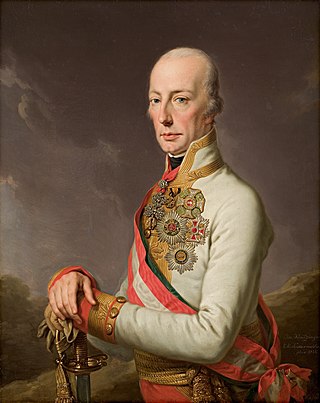
Francis II or I was the last Holy Roman Emperor as Francis II, and the founder and Emperor of the Austrian Empire as Francis I. He assumed the title of Emperor of Austria in response to the coronation of Napoleon as Emperor of the French. Soon after Napoleon created the Confederation of the Rhine, Francis abdicated as Holy Roman Emperor. He was King of Hungary, Croatia and Bohemia. He also served as the first president of the German Confederation following its establishment in 1815.

The House of Habsburg, alternatively spelled Hapsburg in English and also known as the House of Austria is one of the most prominent and important dynasties in European history.

1686 (MDCLXXXVI) was a common year starting on Tuesday of the Gregorian calendar and a common year starting on Friday of the Julian calendar, the 1686th year of the Common Era (CE) and Anno Domini (AD) designations, the 686th year of the 2nd millennium, the 86th year of the 17th century, and the 7th year of the 1680s decade. As of the start of 1686, the Gregorian calendar was 10 days ahead of the Julian calendar, which remained in localized use until 1923.

Leopold I was Holy Roman Emperor, King of Hungary, Croatia, and Bohemia. The second son of Ferdinand III, Holy Roman Emperor, by his first wife, Maria Anna of Spain, Leopold became heir apparent in 1654 by the death of his elder brother Ferdinand IV. Elected in 1658, Leopold ruled the Holy Roman Empire until his death in 1705, becoming the second longest-ruling Habsburg emperor. He was both a composer and considerable patron of music.

The Second Battle of Mohács, also known as the Battle of Harsány Mountain, was fought on 12 August 1687 between the forces of Ottoman Sultan Mehmed IV, commanded by the Grand-Vizier Sari Süleyman Paşa, and the forces of Holy Roman Emperor Leopold I, commanded by Charles of Lorraine. The result was a decisive victory for the Austrians.
Marco d'Aviano, born Carlo Domenico Cristofori was an Italian Capuchin friar. In 2003, he was beatified by Pope John Paul II.
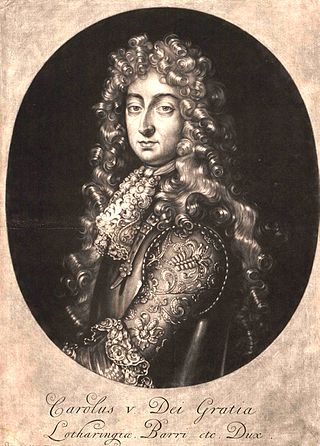
Charles V, Duke of Lorraine and Bar succeeded his uncle Charles IV, Duke of Lorraine as titular Duke of Lorraine and Bar in 1675; both duchies were occupied by France from 1634 to 1661 and 1670 to 1697.
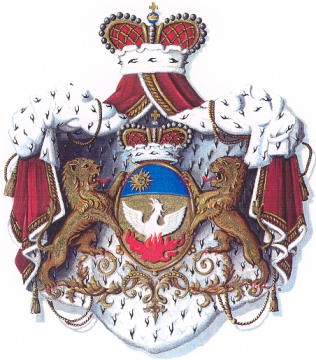
The House of Mavrocordatos is the name of a family of Phanariot Greeks originally from Chios, a branch of which was distinguished in the history of the Ottoman Empire, Wallachia, Moldavia, and modern Greece.

Alexander Mavrocordatos was a member of the Greek Mavrocordatos family, a doctor of philosophy and medicine of the University of Bologna, and Dragoman of the Porte to Sultan Mehmed IV in 1673 — notably employed in negotiations with the Habsburg monarchy during the Great Turkish War.
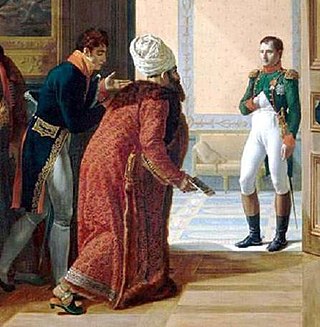
A dragoman or Interpretation was an interpreter, translator, and official guide between Turkish-, Arabic-, and Persian-speaking countries and polities of the Middle East and European embassies, consulates, vice-consulates and trading posts. A dragoman had to have a knowledge of Arabic, Persian, Turkish, and European languages. In the Ottoman Empire, Dragomans were mainly members of the Ottoman Greek community, which possessed considerable multilingual skills, because substantial Greek trading communities did business in the worlds of the Mediterranean Sea, the Black Sea, the Atlantic Ocean and the Indian Ocean. To a lesser extent, other communities with international commercial links, notably the Armenians, were recruited.

Eleonora Gonzaga, was by birth Princess of Mantua, Nevers and Rethel from the Nevers branch of the House of Gonzaga and was Holy Roman Empress, German Queen, Queen consort of Hungary and Bohemia by marriage to Emperor Ferdinand III.

The siege of Buda (1686) was fought between the Holy League and the Ottoman Empire, as part of the follow-up campaign in Hungary after the Battle of Vienna. The Holy League retook Buda after 78 days, ending almost 150 years of Ottoman rule.

Budin Eyalet was an administrative territorial entity of the Ottoman Empire in Central Europe and the Balkans. It was formed on the territories that Ottoman Empire conquered from the medieval Kingdom of Hungary and Serbian Despotate. The capital of the Budin Province was Budin.

Châteauneuf-du-Faou is a commune in the Finistère department of Brittany in north-western France.

François Vincent Marc de Beauvau, Prince de Beauvau-Craon, was a Lorrainese nobleman and viceroy of Tuscany.

The siege of Belgrade was a successful attempt by Imperial Habsburg troops under the command of the Elector of Bavaria Maximilian II Emanuel to capture the city of Belgrade from the Ottoman Empire. The capture took place on 6 September 1688, after a month of siege, during the Great Turkish War (1683–1699). By conquering Belgrade, the Imperialists gained an important strategic outpost, as the city had been the Ottoman's chief fortress in Europe, for more than a century and a half. The Turks recaptured it two years later only to lose it again to Eugene of Savoy in 1717.
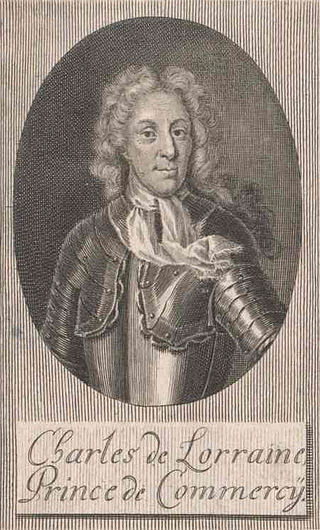
Charles de Lorraine, Prince de Commercy, was a French field marshal of the Holy Roman Empire and a military advisor to Prince Eugene of Savoy. He acquired military prominence after leading imperial troops in the Great Turkish War, in the Nine Years' War, and the War of Spanish Succession.

Abdurrahman Abdi Pasha the Albanian was an Ottoman politician and military leader of Albanian descent, who served as the last governor of the province of Budin.
During the siege of Naģykanizsa in 1601, a small Ottoman force held the fortress of Naģykanizsa in western Hungary against a much larger coalition army of the Habsburg monarchy, while inflicting heavy losses on its besiegers.